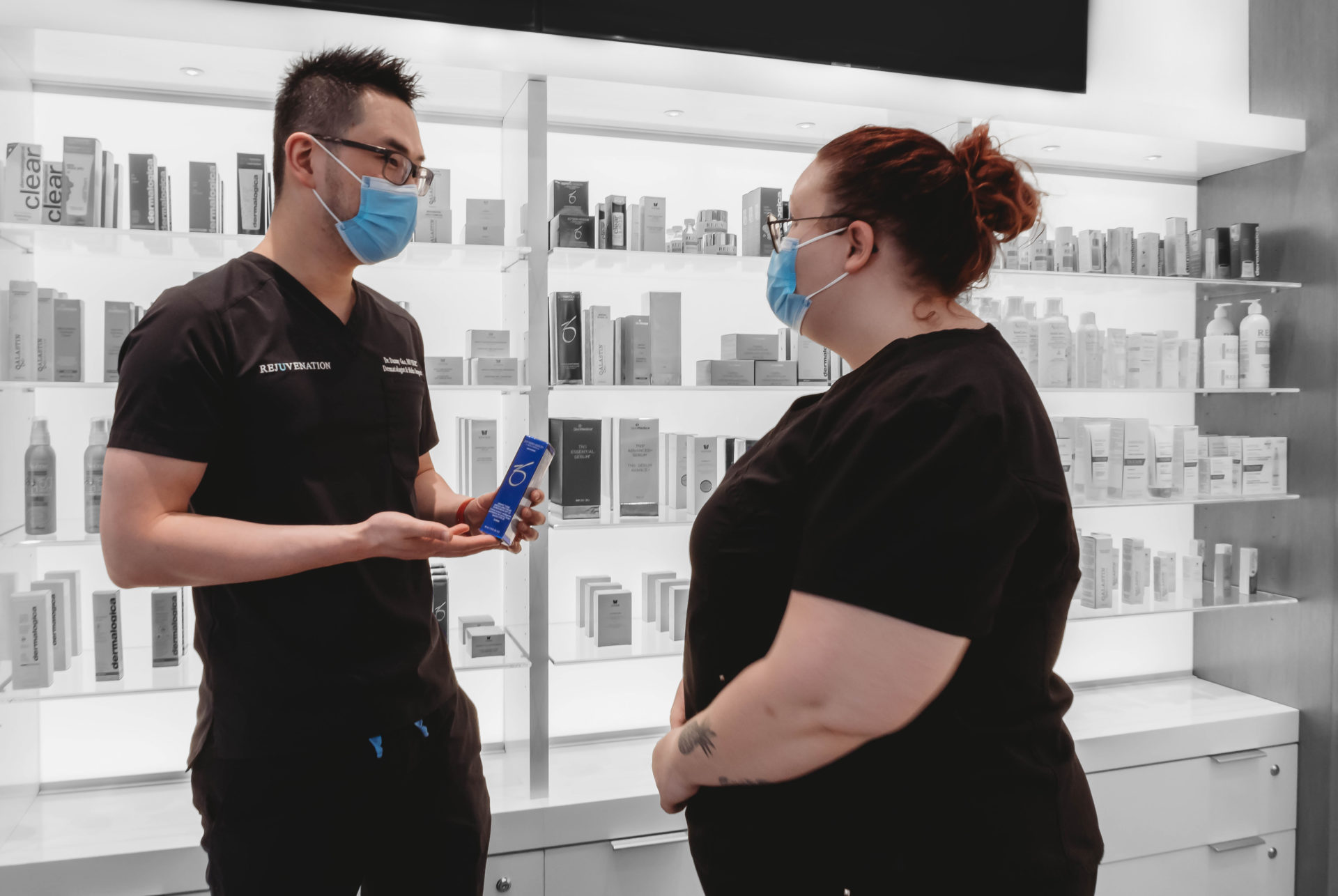Beautiful sunshine, the smell of barbeque, camping, golfing, and social events like the Calgary Stampede are all just around the corner. Summer is almost here. With our fingers crossed that normal life will resume beyond the pandemic, an amazing summer of 2022 might just be in reach. However, the summer can also be associated with sunburns, wrinkles, and other sun-related sensitivities. That’s why it’s important that we remind ourselves and our loved ones about sun protection and how to safely enjoy our summer.
What Sunscreen Lotion is Best for My Skin?
Sunscreen is a safe and effective method to protect yourself from harmful ultraviolet radiation (UV). When selecting a sunscreen lotion, there are 3 main things to look for: strength as measured in Sun Protection Factor (SPF), breadth of coverage, and the type of active ingredient.
Choosing a sunscreen with an SPF of 30 or higher and applying it correctly can protect your skin from 97% of UV radiation. However, what many people don’t know is that a high SPF will provide coverage for UVM rays but not UVA. When navigating the aisles make sure to look out for labels such as ‘broad spectrum sunscreen’, which are sometimes marked as PA+++. This way, your skin has a layer of defence against both UVA and UVB rays.
While chemical sunscreens absorb UV radiation in your stead and physical sunscreens deflect it, both types can be used against skin sun damage. Whether a sunscreen’s active ingredients are chemical or natural does not usually make a significant difference for most people. However, children and patients with pigmentary disorders like melasma may benefit from sunscreens that contain physical ingredients such as Zinc Oxide or Titanium Dioxide.
In general, sunscreens will wear off with time so reapplying every two hours during sun exposure will optimize your sun protection.
Practicing Sun Safe Behavior
There’s always a risk of accidents whenever you are on the road, but we all still need to go places. I make sure to minimize risk by wearing my seatbelt and following traffic laws every time I’m in the car. The same concept applies to enjoying the sunshine. It’s okay to do what you love outdoors, but it’s important to protect yourself from sun damage and skin cancer while you do it.
Try to minimize your exposure to direct sunlight during peak hours between 10 am and 2 pm. This period is when the sun is directly above you and UVB radiation is the strongest. When you do go outside, wear sunscreen and sun-protective clothing. While most normal clothing has some level of SPF protection, wide-brim hats and long sleeves are excellent choices for when you expect to be outside for long periods of time.
Doing Regular Skin Examinations
Despite your best efforts for sun protection, we all have that one sunburn that we regret. UV is a type of radiation and the damage that it does to your skin is cumulative. That’s why it is important to do regular self-skin examinations every one to three months to look for moles or other skin lesions that may be suspicious. The most common method of determining whether your moles are of concern is to use ABCDE.
A – Asymmetry: whether one half of the mole looks different from the other half
B – Border: whether borders are irregular and faded
C – Color: whether there are multiple colors
D – Diameter: whether the border is more than 6 mm
E – Evolution: whether the lesion is new or rapidly evolving
If your moles have any of these features, be sure to book a skincare appointment for an assessment. Of course, a baseline skin examination by a dermatologist will be very valuable regardless of your risk of skin cancer.
In Summary
There is no better method of learning about sun safety and ways of keeping your skin healthy than to speak to your dermatologist in person. I encourage you to come to our skincare clinic in Calgary to meet one of our board-certified dermatologists this summer to chat about ways to safely spend time in the sun!






